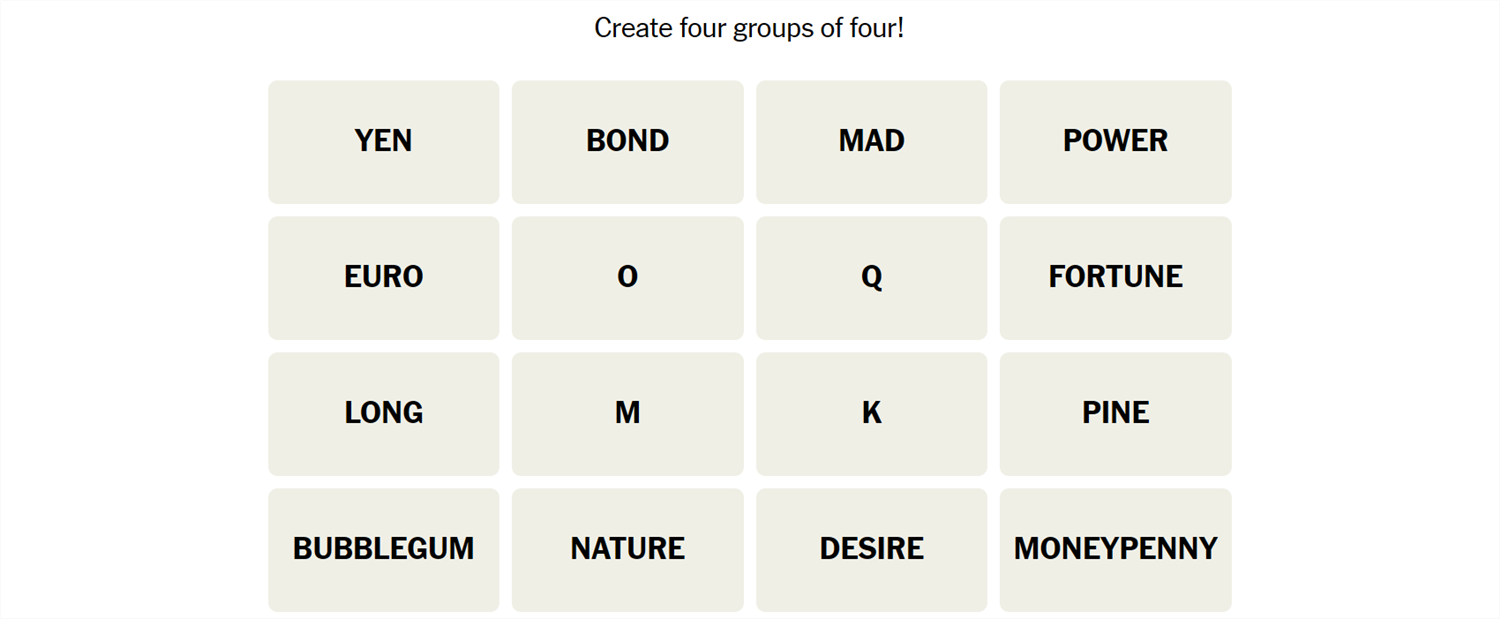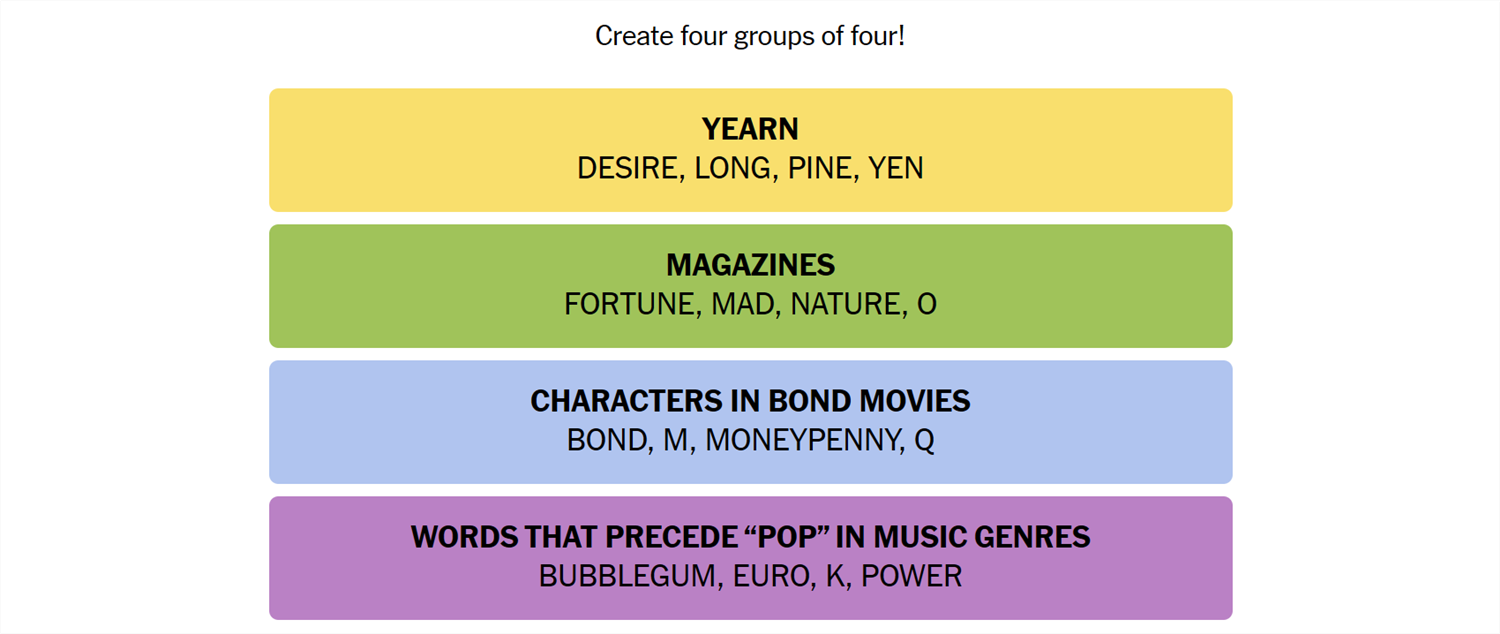Connections is a game from The New York Times that challenges you to find the association between words. It sounds easy, but it’s not: The categories of connections can be almost anything, and they’re usually pretty specific. If you need help finding the answers, we’ve got you covered.
What is Connections?
Connections is a game from The New York Times. The goal is simple: sort 16 words into groups of four. Each group of words will be connected by a common idea or theme. That common element can be anything. We’ve seen everything from games that rely on the number of letters in words to categories that ask you to spot an extra letter at the end of a word. Sometimes these are references to economics, other times they’re fairy tales. There’s no telling what kind of association the words will make.
Once you are sure you understand the link, select 4 words and click “Submit”. You only have four attempts in total, so don’t just guess.
Tips for Today’s Connection Groups
Here are some 390th Connections game tips to help you get started:
- YELLOW: When you really want something.
- Green: Things you might read.
- Blue: Characters in famous spy action movies.
- Purple: Types of music.
If you still need help, the actual names of the groups are:
- YELLOW: Strive
- Green: Magazines
- Blue: Characters in James Bond films
- Purple: Words that precede “Pop” in music genres
Answers from today’s NYT Connections
Desire (Yellow):
Desire, Long, Pin, Yen
Magazines (Green):
Fortune, Madness, Nature, oh
Characters in James Bond films (blue):
Bond, M, Moneypenny, Q
Words that precede “Pop” in music genres (purple):
Bubblegum, Euro, K, Power
How did we solve this connection game?
The July 5th match seemed more difficult than the July 4th match.
The first group I spotted was the yellow one, “Yearn.” The words were desire, long, pine, and yen. With the exception of yen, which is a bit more specialized, these are all common synonyms, so nothing too difficult there.
Fortune and Nature are two magazines that immediately struck me, and as I looked through them a little more, I also found Mad and O. They were part of the green group, “Magazines”.
Bond and Moneypenny pointed me towards James Bond characters, and from there M and Q were the only real options. Blue was “Characters in James Bond films.”
All that was left was bubblegum, euro, k, and power, words I couldn’t seem to put together, no matter how hard I tried. Purple turned out to be “The Words That Precede Pop in Music Genres.”
How do you guess the connection groups?
There is no quick and reliable method to approach Connections like there is with Wordle, because Connections is not algorithmic. However, there are a few things to keep in mind that may help you.
- Find similar parts of speech. Are some words verbs and some nouns? Are some adjectives? Try mentally grouping them according to these categories and see if any other patterns jump out at you.
- Are the words synonyms? Sometimes the categories will just be synonyms of a phrase, or very close to synonyms. Don’t rely on this too much, though. Sometimes Connections will deliberately add words that are Sometimes synonyms to mislead you.
- Try to say the words. Sometimes it helps to sound out the words. One of the puzzles we saw included the words go, rate, faster, clip, pace, speed, move, commute, and hurry, all of which are obviously related to the idea of movement. However, when you sound them out, it becomes a little more obvious that only four of them (go, move, hurry, faster) are words you would actually say to get someone to move.
- Expect that red herring. Connections typically contain words that could be plausibly but incorrectly grouped together. Take the words Bud, Corona, and Light, for example. You might instinctively see these three words together and assume they are grouped into a beer-related category, but that is not the case.
- Look for distinct words. If a word on your board doesn’t have multiple meanings or can only really be used in one context, try using that word as the basis for a category.
- Shuffle the board. Sometimes moving the words around will help you look at them in a new light.
If you haven’t been able to solve this problem, don’t feel too bad: there’s always tomorrow! And these words might be relevant to a topic that interests you, giving you a head start on the competition.

